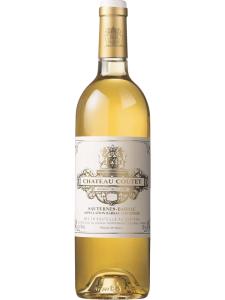Barsac is a small village about 40 miles (65km) south of Bordeaux, in the south-west of France. The sweet white Barsac wines produced from the village's vineyards are some of the finest on Earth, although they remain overshadowed by those of the village's more famous neighbor, Sauternes.
The typical Barsac wine has an intense golden color in its youth, which develops into deep amber over years and decades. It offers blossom-like aromas and notes of stone fruit with a hint of honeysuckle – the trademark of botrytized wines. The best wines balance sweetness with acidity, concentration with freshness, and power with elegance.
The chateaux and wine-growers of Barsac have a unique privilege. They have their very own Barsac appellation, but may also claim the Sauternes title for their wines. Of the five villages that make up the Sauternes viticultural area (Sauternes, Barsac, Bommes, Fargues and Preignac), only Barsac has this honor. The appellation laws for Sauternes and Barsac are identical in all but the geographical area they cover.
Barsac's wines are made mostly from Semillon, which accounts for about eight in every 10 vines in the local vineyards. Sauvignon Blanc accounts for most of the remaining vineyard area, with occasional showings of Muscadelle and Sauvignon Gris. Semillon gives the wines a broad, well-structured base and aromas of beeswax and apricot. Sauvignon Blanc complements this with distinctive herbal aromatics, and sufficient acidity to keep the wines fresh rather than cloying. This pair have become the preferred varieties for sweet wines from all over Bordeaux, not just because they are the grapes used to make the region's dry whites, but also because of their susceptibility to a benevolent form of mold known in the wine trade as 'noble rot', which is brought about by Botrytis cinerea.
Strange as it may seem to the uninitiated, Botrytis cinerea (often called simply botrytis) is a kind of fungus. It thrives in the misty air that hangs over Barsac's vineyards on autumn mornings. The 'noble rot' it is responsible for develops most reliably in areas where the morning mists are followed by warm, dry afternoons that dry the grapes out and prevent the development of grey rot. When repeated over a number of weeks, this process gradually dries the grapes, reducing their water content and naturally concentrating their sugars and flavor compounds. The result is intensely sweet, flavor-rich juice.
Barsac's location on the banks of the Garonne River, and its tributary the Ciron, create just the right conditions for this. As the cool night air begins to warm in the morning, a blanket of mist rises off the Ciron and settles over Barsac's vineyards. There it remains, until sunshine warms the earth and air sufficiently for the mist to evaporate.
By law, the grapes used to make Barsac wines may be picked only when their must weight reaches 221 grams per liter (the same stipulation for the area's dry wines is just 162g/L). Because not all of these abundant sugars are fermented into alcohol, the finished wine is left with high levels of natural residual sugar.
Sauternes' wines are extremely expensive to make, for three key reasons. First is the substantial risk involved in leaving ripe grapes on the vines for so long into the autumn; frost, rain and grey rot all pose significant threats. Second is the cost of paying skilled grape pickers to make the multiple passes (tries successives) through the vineyards, searching for grape bunches affected by botrytis. Third is that most Barsac wines are aged in oak barriques for between 18 and 36 months – a considerably investment of time and money. Above and beyond these three reasons, there is no real guarantee that noble rot will develop on the grapes at all, as it relies on such specific climatic conditions. There have been vintages when no sweet Barsac wine was produced at all.
There are a few subtle differences between the Barsac and Sauternes zones. Sauternes is slightly hillier, which increases the effects of the mists and ultimately leads to more richly botrytized wines, while Barsac's flatter sand- and limestone-based soils create finer, more elegantly flavored wines.


